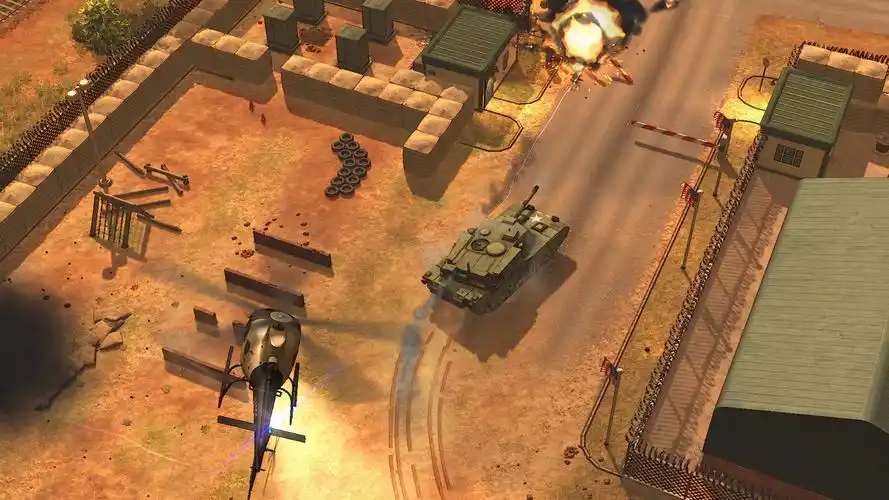Title: Hands-On Heroism: How the 'Mend Missions' Update Transforms Gas Line Repair Simulator VR
The world of vocational training and simulation is undergoing a quiet revolution, moving from abstract theory to visceral, practical experience. At the forefront of this shift is the innovative Gas Line Repair Simulator VR, a title dedicated to the unsung heroes of urban infrastructure. Its latest expansion, the "Mend Missions" update, is not merely a content drop; it's a profound evolution that elevates the simulator from a technical tutorial into a narrative-driven campaign of civic responsibility. This update successfully bridges the gap between cold mechanics and the very human stakes of the trade.
Beyond the Training Module: A Campaign for the Community
Prior to Mend Missions, players honed their skills in isolated scenarios: fixing a leak in a quiet suburban street, replacing a valve in a commercial district. The core gameplay—using a realistic virtual toolkit, performing safety checks, and executing repairs under pressure—was brilliantly executed but lacked a connecting thread. The new update introduces a dynamic campaign mode set in the persistent world of "Pipeworth," a bustling city district entirely dependent on your expertise.

Mend Missions weaves a series of interconnected jobs into a larger story. You’re no longer just a trainee; you are the newly assigned lead technician for Pipeworth. Each mission, or "Mend," is a chapter. It might start with a simple, reported gas odor at a local bakery, but your investigation reveals a more complex, systemic issue—corroded pipes beneath the entire main street. Subsequent missions task you with not just putting out proverbial fires, but planning and executing a long-term repair strategy for the neighborhood. This narrative structure provides a powerful sense of purpose. You’re not just fixing pipes; you’re safeguarding a community, getting to know the virtual residents who rely on your skill and diligence.
The Introduction of Dynamic Failure & Adaptive Challenges
The most significant technical leap in the Mend Missions update is the Dynamic Failure System. Previously, scenarios had predefined problems. Now, how you perform a repair directly influences the future stability of Pipeworth’s gas lines.
A repair done hastily, without proper purging or a perfectly welded seam, might hold temporarily but will become a "Pending Failure." Days later in the campaign, you’ll receive an emergency call-out—the same location has suffered a catastrophic blowout because of your previous subpar work. The game brilliantly simulates the consequences of cutting corners. This system forces players to internalize best practices not because a tutorial says so, but because the virtual world will literally react to their mistakes. It’s a powerful teaching tool that mirrors the immense real-world responsibility these technicians carry.
Furthermore, missions are no longer static. Adaptive challenges introduce variables that demand quick thinking. A routine repair on a snowy day might be complicated by reduced visibility and the need to keep your equipment from freezing. A nighttime call-out requires the adept use of helmet-mounted lights and auditory clues to locate a leak. One memorable mission has you coordinating with a virtual backhoe operator to carefully excavate a site without causing further damage, introducing an element of communication and spatial awareness rarely seen in simulators.
Enhanced Realism: Tools, Physics, and the "Weight" of Responsibility
The Mend Missions update doubles down on realism with a suite of new features that deepen immersion.
- Expanded Toolkit: The virtual toolbox has seen a substantial upgrade. New tools like multi-gas detectors (for reading oxygen levels and combustible gas concentrations), pipe sectioning machines, and more advanced welding rigs are introduced progressively throughout the campaign. Each tool feels uniquely physical in VR, with haptic feedback that differentiates the smooth turn of a valve from the violent vibration of a pneumatic jackhammer.
- Advanced Physics Engine: The gas leak simulation is now more realistic than ever. Leaks are visually affected by wind direction and speed, requiring you to approach from upwind. The sound of escaping gas changes based on pressure and orifice size, becoming a critical diagnostic tool.
- The Pressure Meter: A new UI element isn't just for show—it’s a core gameplay mechanic. It represents the mounting stress of the job: the worried calls from dispatch, the anxious looks from virtual pedestrians, the ticking clock before a situation escalates. Managing this psychological pressure, by performing calming breathing exercises (actual in-game mechanics) and working methodically, becomes as important as managing the physical repair.
The Verdict: A New Gold Standard for Vocational VR
The Mend Missions update for Gas Line Repair Simulator VR is a masterclass in how to add meaningful depth to a simulation experience. It transcends its foundational premise by wrapping its expertly crafted mechanics in a compelling, consequence-driven narrative. It moves the player from a passive learner to an active guardian of a virtual city, teaching them that true expertise lies not just in knowing how to use a tool, but in understanding the weight of the responsibility that comes with it.
For aspiring technicians, it’s an invaluable, risk-free training ground that teaches muscle memory and procedural logic better than any textbook. For simulation enthusiasts, it’s a deeply engaging and uniquely stressful puzzle game where the stakes feel tangibly real. This update doesn’t just add missions; it builds a world worth mending, solidifying the simulator's place as a pioneering and essential title in the VR landscape.


















